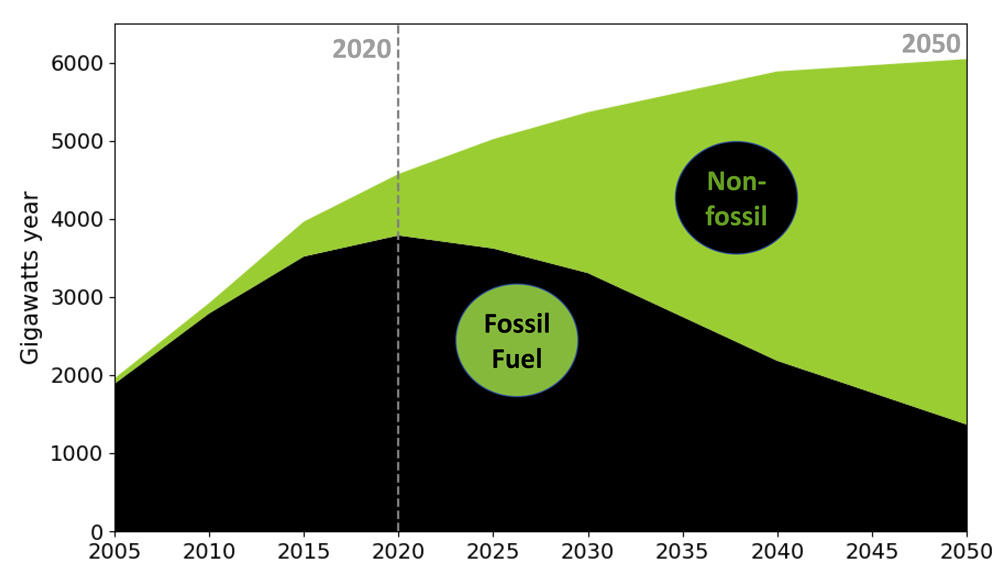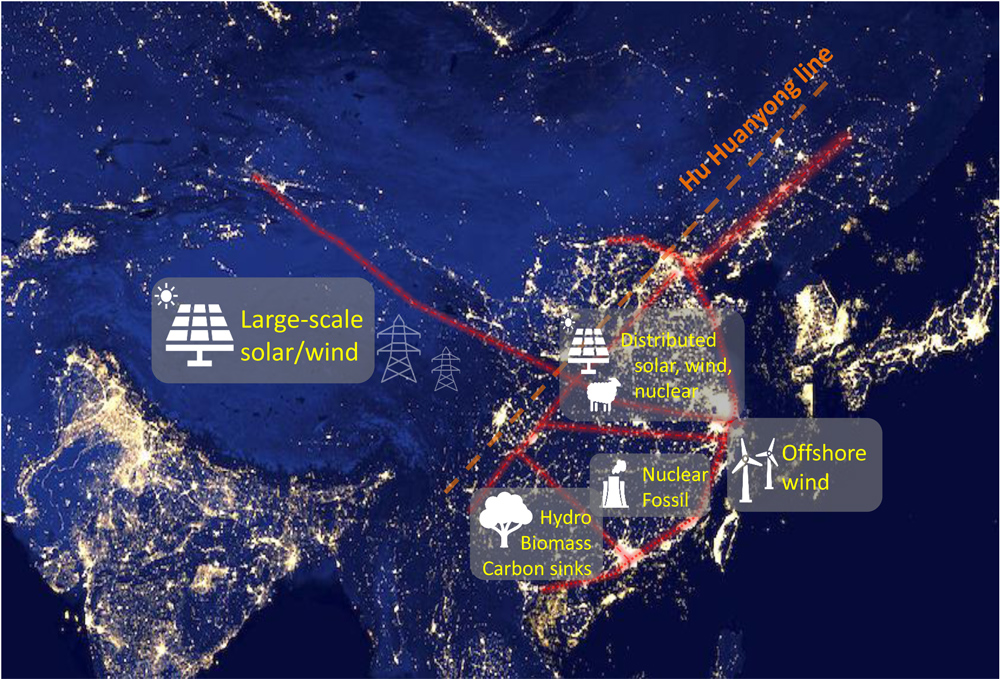On September 22, 2020, with COVID-19 pandemic concerns in the background, China announced its climate goal to peak carbon emissions before 2030 and reach carbon neutrality before 2060. The planning for this significant effort (referred to as "Shuang Tan" or the Double Carbon Goal in Chinese) is now in full swing across China. However, the pathway to decarbonization is unclear. The necessary transition to renewable (non-fossil fuel energy) and its impact on China and the rest of the world may be more profound than the reform and development that have occurred within the past 40 years. According to a recently published perspective
article in
Advances in Atmospheric Sciences, the needed transition towards non-fossil fuel energy represents a "Yin to Yang reversal": the challenges are enormous.
The Yin and Yang of fossil vs non-fossil fuel energy source mix. (Image by Zeng et al.)
The study, combining efforts of the Institute of Atmospheric Physics at the Chinese Academy of Sciences, the Energy Research Institute of the National Development and Reform Commission, University of Maryland, the Breakthrough Institute, Tsinghua University, and the Ministry of Climate Change of Pakistan, resulted in several insightful pathways toward China's goal. It provides an analysis of four representative scenarios that show different ways to achieve carbon neutrality.
A typical scenario to achieve China's carbon neutrality goal before 2060 would require a complete reversal of the nation's relative contribution to total energy supply. This includes an unprecedented rapid increase in renewable energy and nuclear generation, and a decrease in fossil fuel use less than 30 years after peak carbon emissions.
In all these scenarios, implementing non-fossil fuel energy sources is the primary component. That said, nuclear, wind, and bio energy approach their corresponding resource limitations in each situation, with solar energy as an exception. This suggests that solar energy is critical to any carbon neutrality goal.
The recently achieved price equality of solar and wind energy compared to fossil fuel sources lays the foundation for the ambitious goal. However, deployment at the large scale needed is subject to technological and commercial bottlenecks. For example, to minimize long-distance electricity transmission, security risks, and reliability shortcomings, energy providers should deploy distributed energy systems.
Researchers also recommend a cautious approach with conventional nuclear electricity generation, and a faster phaseout of coal powered plants. More aggressive distributed solar such as agrivoltaics, wind, small and modular nuclear, smart grid, and energy storage action is needed.


